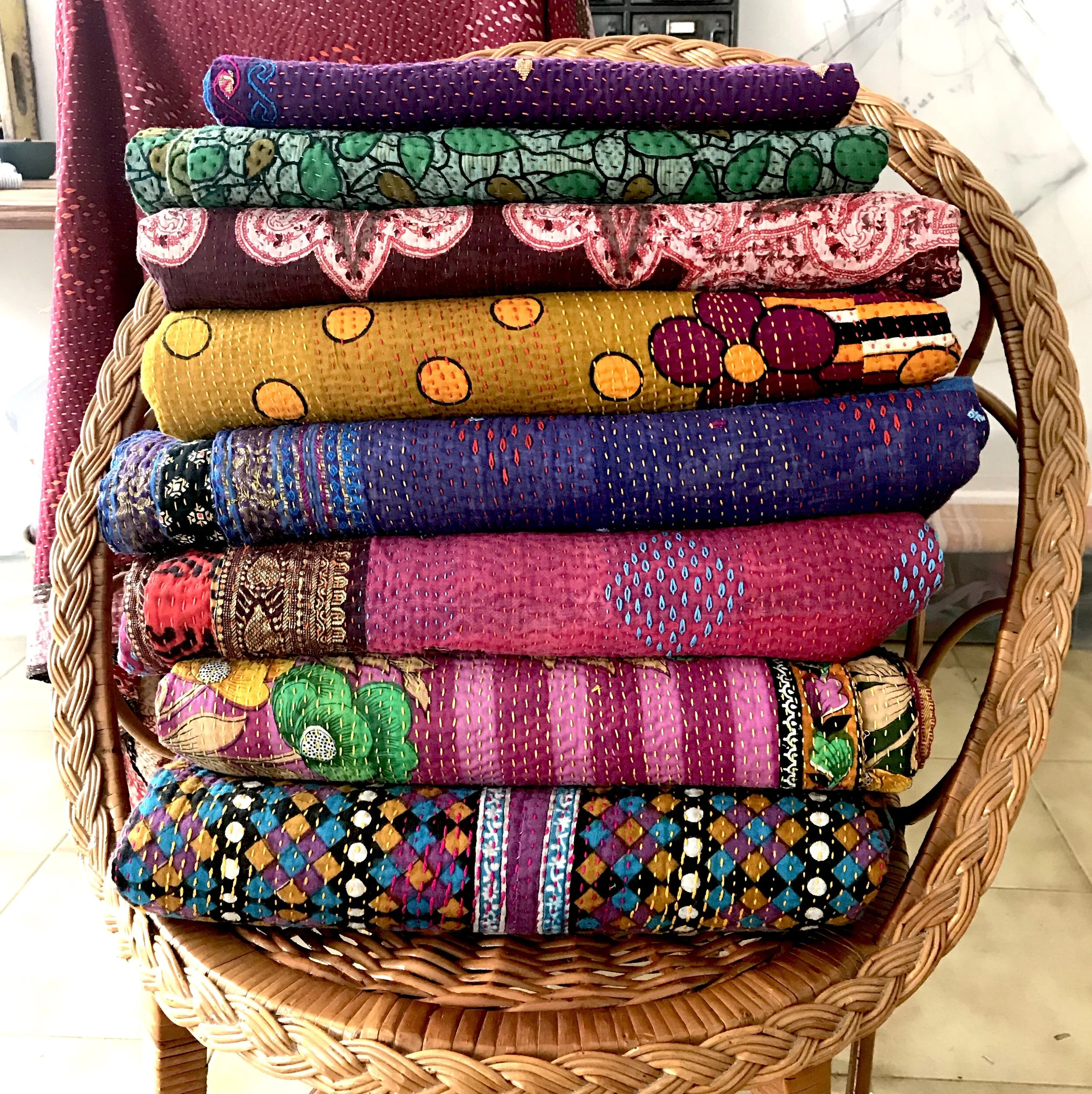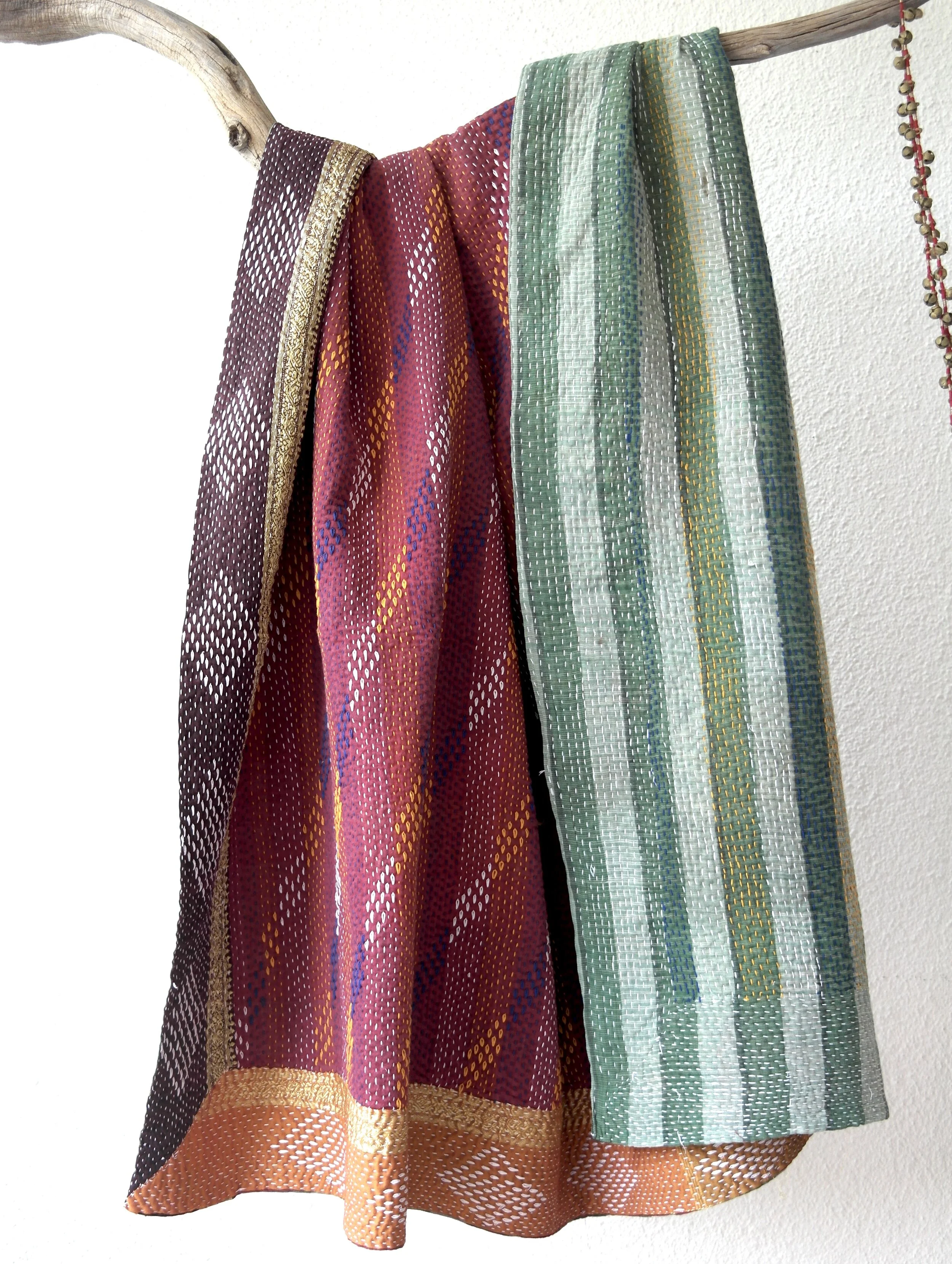About Kantha
Kantha stitching is a traditional Bengali craft, practiced in the Western parts of India and in Bangladesh. Kantha quilts are traditionally made from layers of used textile pieces such as saris, dhotis and other fabric scraps.
There are many different forms of Kantha stitching. The one we mostly use is a running stitch applied in rows, which produces a slightly wrinkled effect on the textile pieces. Even this simple stitching presents in many different forms with regard to design, the alignment of textile pieces, the number of layers of a quilt, the density and style of stitching, and patterns used to embellish the simple stitches.
The creation of a beautiful and one-of-a-kind quilt can be very time consuming and needs a certain level of skill. The stitching may look fairly straight-forward, but working on such large pieces in an exact manner can be quite challenging! After wearing a sari for around six months on an almost daily basis, it becomes worn our in certain places. Big parts of a 210-inch-long sari are perfectly useful for quilting. For one average size quilt, about four saris are needed.
Depending on the density and size of stitches, it can take weeks or months to complete a Kantha quilt. The denser and smaller the stitching, the more accomplished the quilt!
How Kantha Quilts are made
First, the sari pieces are layered carefully, without wrinkles and creases. If this is not done perfectly, quilts will have sections of bunched-up fabric when they are stitched together. The layers are then stitched together provisionally, so as to keep them in place while the more labour-intensive Kantha stitching is done. The yarn used is colour-fast cotton yarn. Sometimes, several women work together on a bigger quilt. The simple running Kantha stitch is applied row after row. To finish off the piece, it can be embellished with different decorative stitching that are stitched onto the running Kantha stitch and only show on the upper side of the blanket.



